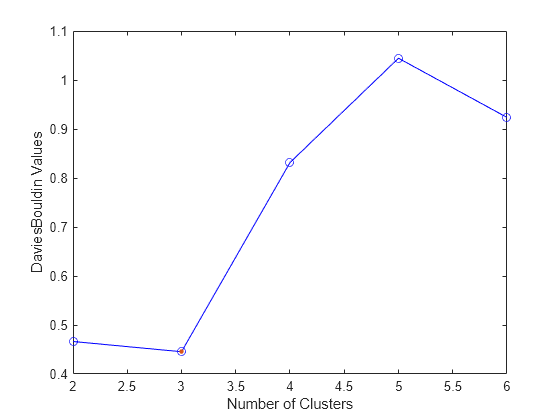DaviesBouldinEvaluation
Davies-Bouldin criterion clustering evaluation object
Description
DaviesBouldinEvaluation is an object consisting of sample data
(X), clustering data (OptimalY), and Davies-Bouldin
criterion values (CriterionValues) used to
evaluate the optimal number of clusters (OptimalK). The Davies-Bouldin
criterion is based on a ratio of within-cluster and between-cluster distances. The optimal
clustering solution has the smallest Davies-Bouldin index value. For more information, see
Davies-Bouldin Criterion.
Creation
Create a Davies-Bouldin criterion clustering evaluation object by using the evalclusters function and specifying the criterion as
"DaviesBouldin".
You can then use compact to create a compact version of the
Davies-Bouldin criterion clustering evaluation object. The function removes the contents of
the properties X, OptimalY, and
Missing.
Properties
Object Functions
Examples
More About
References
[1] Davies, D. L., and D. W. Bouldin. “A Cluster Separation Measure.” IEEE Transactions on Pattern Analysis and Machine Intelligence. Vol. PAMI-1, No. 2, 1979, pp. 224–227.
Version History
Introduced in R2013b

